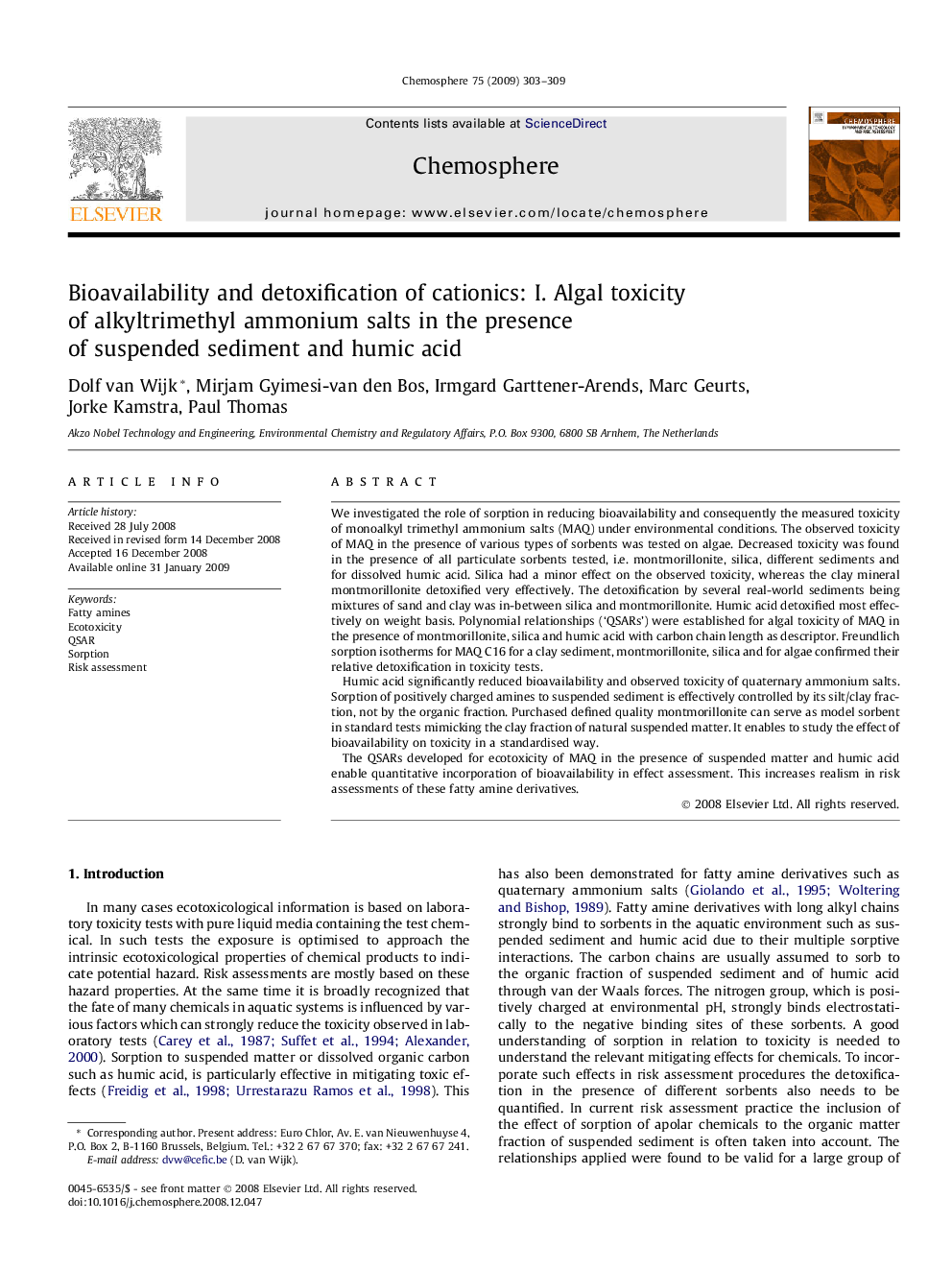| Article ID | Journal | Published Year | Pages | File Type |
|---|---|---|---|---|
| 4413238 | Chemosphere | 2009 | 7 Pages |
We investigated the role of sorption in reducing bioavailability and consequently the measured toxicity of monoalkyl trimethyl ammonium salts (MAQ) under environmental conditions. The observed toxicity of MAQ in the presence of various types of sorbents was tested on algae. Decreased toxicity was found in the presence of all particulate sorbents tested, i.e. montmorillonite, silica, different sediments and for dissolved humic acid. Silica had a minor effect on the observed toxicity, whereas the clay mineral montmorillonite detoxified very effectively. The detoxification by several real-world sediments being mixtures of sand and clay was in-between silica and montmorillonite. Humic acid detoxified most effectively on weight basis. Polynomial relationships (‘QSARs’) were established for algal toxicity of MAQ in the presence of montmorillonite, silica and humic acid with carbon chain length as descriptor. Freundlich sorption isotherms for MAQ C16 for a clay sediment, montmorillonite, silica and for algae confirmed their relative detoxification in toxicity tests.Humic acid significantly reduced bioavailability and observed toxicity of quaternary ammonium salts. Sorption of positively charged amines to suspended sediment is effectively controlled by its silt/clay fraction, not by the organic fraction. Purchased defined quality montmorillonite can serve as model sorbent in standard tests mimicking the clay fraction of natural suspended matter. It enables to study the effect of bioavailability on toxicity in a standardised way.The QSARs developed for ecotoxicity of MAQ in the presence of suspended matter and humic acid enable quantitative incorporation of bioavailability in effect assessment. This increases realism in risk assessments of these fatty amine derivatives.
